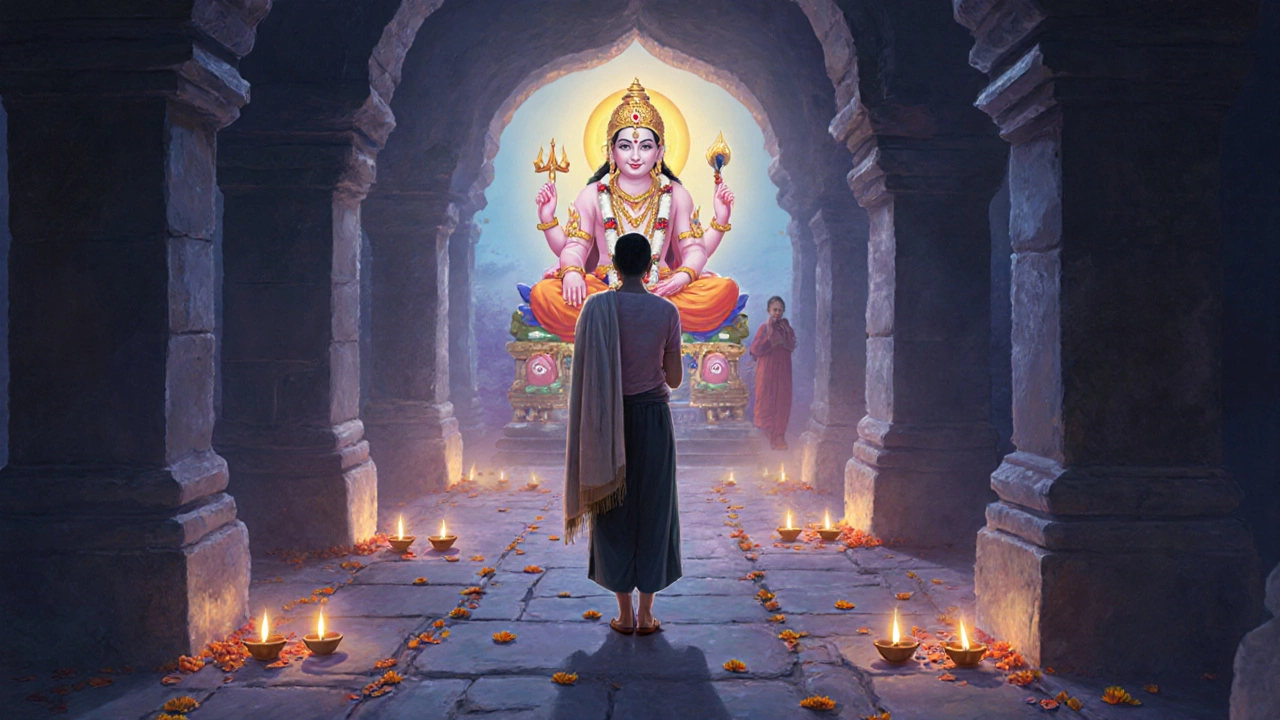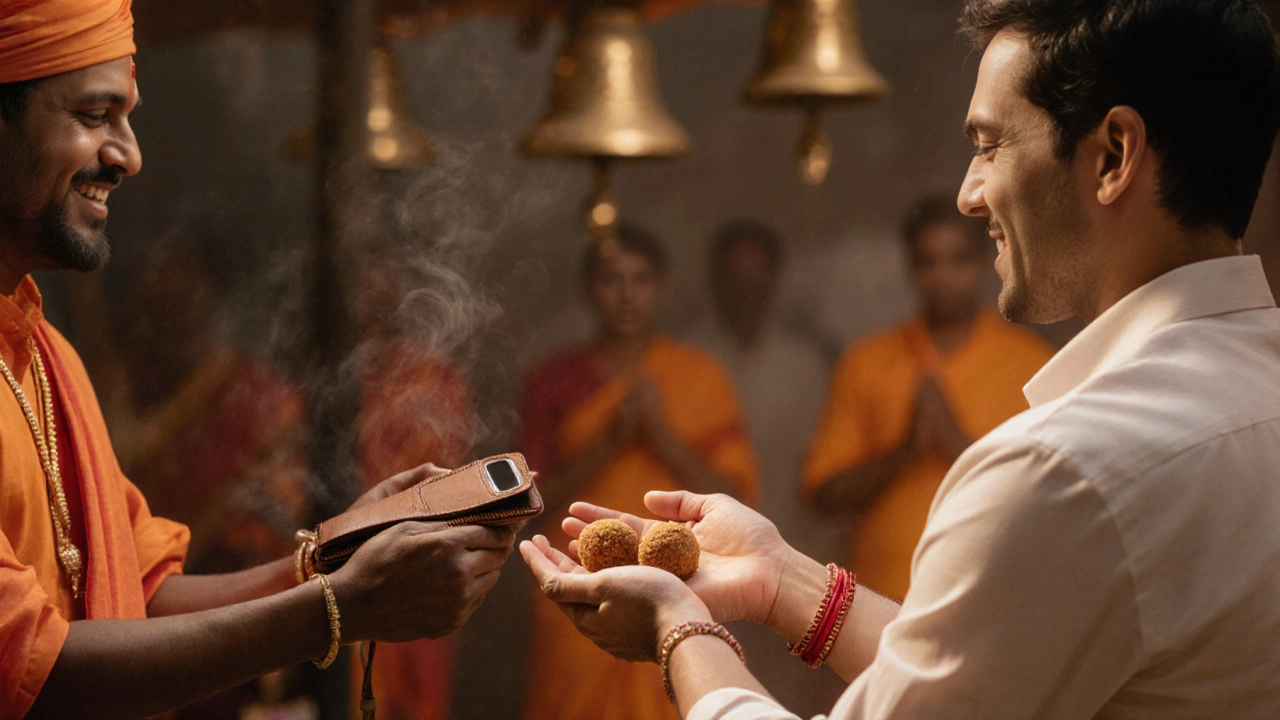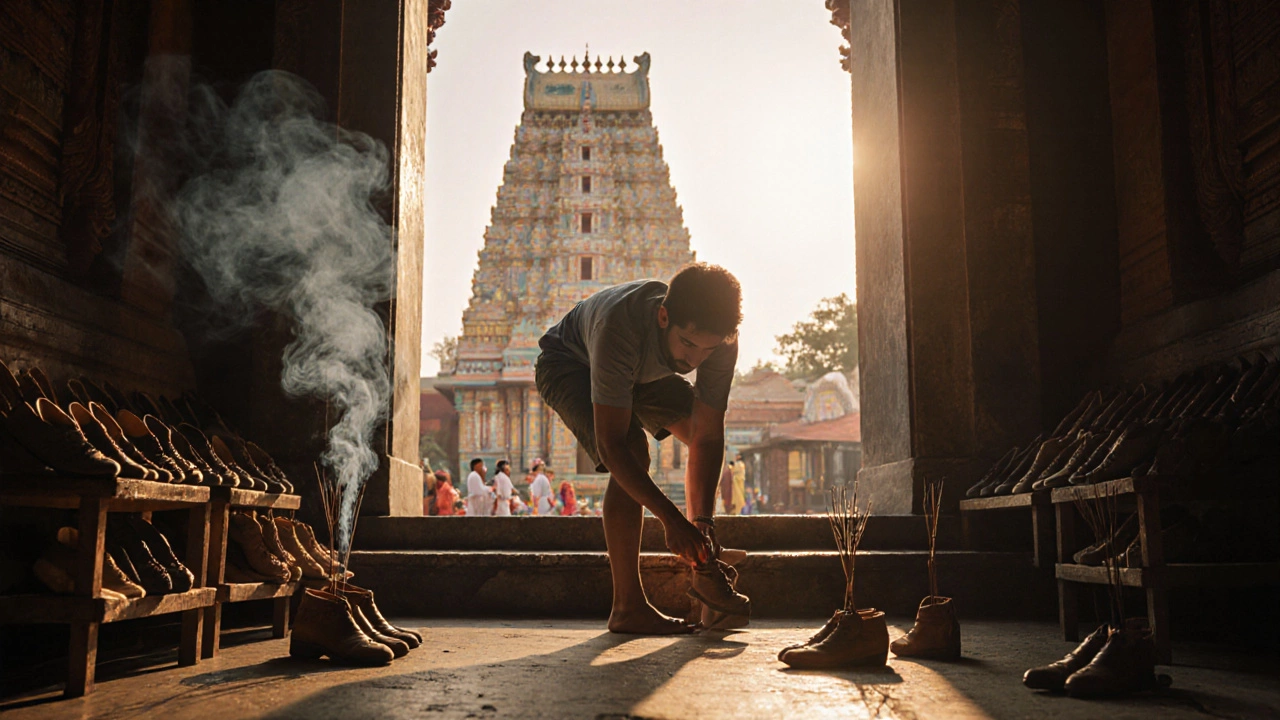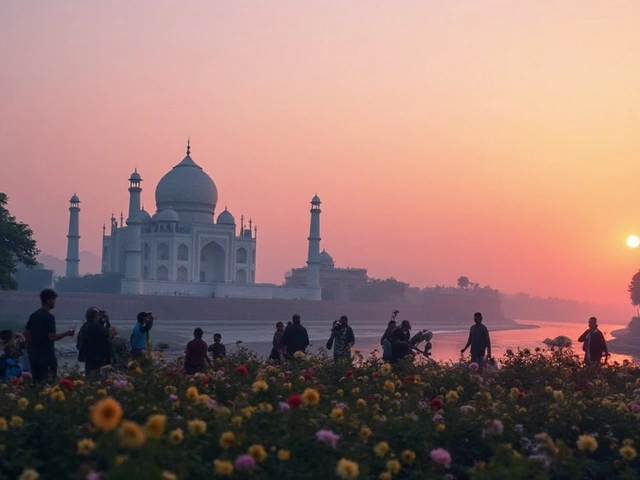Hindu Temple Etiquette Checklist
Respectful Temple Visit Checklist
This checklist will help you prepare for your temple visit. Check each item that applies to your situation.
Checklist Summary
Walking into a Hindu temple can feel overwhelming-especially if you’ve never been inside one. The smell of incense, the sound of bells, the sight of people bowing, offering flowers, and chanting in a language you don’t understand. It’s beautiful, yes-but also deeply sacred. If you’re visiting a Hindu temple in India, whether you’re a tourist, a backpacker, or someone with cultural curiosity, knowing how to behave respectfully isn’t just polite-it’s essential.
Remove Your Shoes Before Entering
Every Hindu temple requires visitors to remove their shoes before stepping inside the main courtyard or sanctum. This isn’t just a rule-it’s a sign of purity. The temple floor is considered holy ground, and shoes carry dirt from the outside world. You’ll see shoe racks or storage areas just before the entrance. Leave them there. Don’t worry about theft; most temples have attendants watching over them, and it’s rare for shoes to go missing. If you’re wearing socks, you can usually keep them on, but bare feet are preferred. Some temples, like the famous Tirupati Balaji Temple, even provide free plastic slippers if you forget to wear socks.Dress Modestly and Appropriately
What you wear matters more than you think. Both men and women should cover their shoulders and knees. Shorts, tank tops, sleeveless shirts, and revealing dresses are not allowed in most temples. In South India, especially in Tamil Nadu and Kerala, the dress code is stricter-women are often expected to wear sarees or long skirts with blouses, and men wear dhotis or long pants. In North India, like in Varanasi or Jaipur, modest Western clothing (long pants and a tunic or shirt with sleeves) is usually acceptable. If you’re unsure, bring a scarf or shawl. You can drape it over your shoulders or wrap it around your legs if needed. Many temples near popular tourist spots have a small stall selling or renting simple coverings for a few rupees.Follow the Right-Hand Circumambulation Rule
Inside the temple, you’ll see people walking in circles around the main shrine. This is called pradakshina, and it’s done clockwise-always with the shrine on your right side. Don’t cut across the path or walk counterclockwise. It’s considered disrespectful. If you’re not sure which way to go, watch others. Most temples have a clear path marked by stones or railings. Don’t rush. This isn’t a photo op-it’s a quiet act of devotion. Even if you’re not religious, walking slowly and mindfully shows respect.Don’t Point Your Feet Toward the Deity
In Hindu culture, the feet are considered the lowest and least pure part of the body. Never point your feet directly at the idol, priest, or anyone else in the temple. When sitting or kneeling, tuck your feet under you or keep them flat behind you. If you’re taking a photo, make sure your back is turned toward the deity, not your soles. This rule is often overlooked by tourists, but locals notice-and it can cause discomfort. It’s not about punishment; it’s about honoring the sacredness of the space.
Ask Before Taking Photos
Photography is allowed in many temples, but not everywhere. Some inner sanctums strictly prohibit cameras and phones. Signs are usually posted, but if you’re unsure, ask a temple attendant. Even if photos are allowed, never use flash. It’s disruptive during rituals and considered disrespectful to the deity. Avoid photographing priests while they’re performing puja (worship). And never take photos of people praying unless you’ve asked permission. A simple smile and a nod goes further than a snapped picture.Don’t Touch the Idol or Offerings
The main idol (murti) is not a statue-it’s believed to be a living presence of the divine. Never touch it, no matter how tempting it looks. Don’t reach over the railing, even to drop an offering. Use your right hand to place flowers, rice, or coins in the designated bowls. Don’t use your left hand-it’s traditionally considered unclean in Hindu customs. If you’re unsure where to put your offering, watch others or wait for someone to guide you. Never take anything from the temple as a souvenir-not even a flower or a piece of prasad (blessed food). If you want to take something home, buy it from the temple shop.Understand the Silence and Noise Rules
Temples are places of quiet reflection. Loud talking, laughing, or phone calls are inappropriate. Keep your voice low. If you need to speak, step outside. Many temples have a bell near the entrance. Ringing it is a way to announce your presence to the deity. But don’t ring it repeatedly or loudly. One gentle ring is enough. If you hear chanting or singing, don’t interrupt. Sit quietly. Even if you don’t understand the language, the rhythm and tone carry meaning. You don’t need to join in-just be present.Know When to Enter and When to Leave
Most temples open early-around 5 or 6 a.m.-and close in the evening, usually between 8 and 10 p.m. But they have breaks during the day for rituals. These are called aarti times, and they’re the most sacred moments. If you arrive just as the aarti begins, stay. Don’t walk away. Stand quietly and observe. These ceremonies can last 15 to 30 minutes. The temple staff will usually guide visitors to stand in designated areas. Avoid entering during the midday closure-it’s when priests clean and rest the deity. Also, avoid visiting during major festivals like Diwali or Holi unless you’re prepared for massive crowds. If you’re there for peace, choose a weekday morning.
Accept Prasad Gracefully
Prasad is food or flowers offered to the deity and then distributed to devotees. It’s considered blessed. If you’re offered prasad, accept it with both hands. Don’t refuse it unless you have a medical reason. Eat it on the spot or take it home. Never throw it away. If you can’t eat it, place it on a clean surface. Don’t leave it on the ground. Many temples offer vegetarian prasad-laddoos, sweets, or rice. It’s not just food; it’s a gift from the divine. If you’re not comfortable eating it, you can still accept it with gratitude.Respect the Priests and Staff
The priests (pandas or pujaris) are not tour guides. They’re spiritual caretakers. Don’t ask them to explain rituals unless they offer. Don’t take selfies with them. Don’t touch them or hand them money directly unless it’s part of the offering process. If you want to make a donation, use the donation box or ask for a receipt. Staff members who clean or manage the temple are often from lower castes-don’t treat them as invisible. A simple “thank you” goes a long way. In many temples, they’ll even help you with your shoes or show you where to sit.What If You’re Not Hindu?
You don’t need to be Hindu to visit a temple. Millions of non-Hindus visit temples in India every year. The rules aren’t about converting you-they’re about honoring the space. You don’t have to pray, chant, or believe. But you do need to behave as if you’re in someone’s home. Imagine walking into a church, mosque, or synagogue where you don’t share the faith. You’d follow the customs out of respect. Do the same here. Your presence is welcome. Your awareness is what makes the difference.Common Mistakes Tourists Make
- Wearing shorts or flip-flops inside the temple grounds.- Taking selfies with the deity or in front of the sanctum.
- Eating or drinking inside the temple.
- Bringing leather items (wallets, belts, shoes) into the temple.
- Using the left hand to give or receive anything.
- Standing with your back to the main shrine while taking photos.
- Asking priests for predictions or horoscopes unless it’s part of a formal service.
These aren’t just rules-they’re signs of cultural sensitivity. Getting them right means you’re not just a visitor-you’re a respectful guest.
Can non-Hindus enter Hindu temples in India?
Yes, non-Hindus are welcome in most Hindu temples across India. There are a few exceptions, like the Sabarimala Temple in Kerala, which has specific restrictions based on gender and faith. But in general, temples in cities like Varanasi, Rameswaram, Puri, and Tirupati actively welcome tourists. The key is to follow the dress code, remove your shoes, and behave respectfully. You don’t need to convert or pray-you just need to observe the customs.
Do I need to pay to enter a Hindu temple?
Most Hindu temples in India are free to enter. There’s no ticket system like at historical monuments. However, some large temples, especially those run by state governments or trusts, may charge a small fee for special darshan (viewing of the deity) or to skip long lines. For example, the Tirumala Venkateswara Temple charges ₹300 for a special entry pass. But basic entry is always free. Don’t be fooled by people asking for money at the gate-official donations go into boxes, not into someone’s hand.
Is it okay to bring a camera or phone inside?
It depends on the temple. Many allow phones and cameras, but not in the inner sanctum. Look for signs that say "No Photography" or ask a staff member. Flash photography is always prohibited. Never point your phone at priests during rituals. If you’re unsure, leave your phone in your bag. The best memories aren’t the photos you take-they’re the quiet moments you experience.
What should I do if I accidentally break a rule?
If you make a mistake-like pointing your feet at the idol or forgetting to remove your shoes-don’t panic. Most temple staff understand tourists aren’t familiar with the customs. A quick apology and a nod is enough. You can quietly fix it: turn your feet, take off your shoes, step back. No one will scold you. What matters is that you’re willing to learn. Respect is more important than perfection.
Can I bring food or water into the temple?
No. Eating, drinking, or chewing gum inside the temple is not allowed. The temple is a sacred space, not a picnic spot. If you’re thirsty, drink water before you enter or wait until you leave. Some temples have water taps outside for washing hands and feet, but never drink from them. If you’re visiting during a long wait, carry a bottle in your bag and sip it outside the compound.



